In every non-profit organisation, every dollar counts, and every supporter makes a difference. But with tight budgets, limited staff, and a growing need to stand out digitally, reaching the right audience and keeping them engaged can feel like a steep challenge. That’s where email marketing strategies for non-profits come into play, offering a cost-effective and impactful way to connect with your audience, inspire action, and build lasting relationships that drive your mission forward.
That’s where email marketing shines. It is a powerful, cost-effective tool that helps nonprofits build a community of loyal supporters, raise awareness for important causes, and ultimately drive more donations.
With email marketing, a nonprofit organisation can reach hundreds, even thousands, of potential donors and volunteers at the click of a button. It can also keep supporters informed, share success stories, and make donation opportunities easy and accessible.
Below, you will find everything you need to know to start or improve your nonprofit’s email marketing strategy, from building an engaged list to crafting emails that inspire action. Whether you’re a small grassroots organisation or a large foundation, these strategies can help your nonprofit organisation build lasting connections with those who believe in your mission.
Table of Contents
Why Email Marketing is a Must for Non-profits
Email marketing is a robust tool and communication backbone for nonprofits. Its affordable, personal, and impactful qualities make it ideal for nonprofit organisations with big missions and limited resources.
With the right approach, a nonprofit can use email marketing to keep supporters engaged, drive consistent donations, mobilise action, and further its mission.
Below are reasons email marketing is non-negotiable for nonprofit organisations.
- Cost-Effective Outreach
Nonprofits often have tight budgets, and email marketing is one of the most cost-effective ways to reach supporters; unlike paid advertising or traditional media, email costs next to nothing while having a huge reach.
Even better, if you’re using free or discounted email marketing software designed for nonprofits, the value is unbeatable. This affordability allows nonprofits to consistently communicate with supporters, drive donations, and spread awareness without breaking the bank.
- Direct Line to Engaged Supporters
Supporters who subscribe to your email list are actively choosing to stay informed. This means they’re already interested in your cause, so you’re talking to a more receptive audience from the start.
A well-structured email campaign can lead to higher engagement rates than social media, where algorithms can bury your posts. With email, your message lands directly in their inbox, and your content has the spotlight, not just a glance as they scroll through social media.
- Personalised and Targeted Messaging
Email marketing software allows nonprofit organisations to segment their lists and send personalised content based on donor history, volunteer interests, or event attendance. For example, if a segment of your audience frequently donates to environmental causes, you can send content about specific projects.
This makes emails more relevant and engaging, which can lead to higher open, click-through rates, and even donations. Personalisation can deepen your connection with supporters, making them feel like valued contributors to your mission.
- Encourages Donor Retention and Repeat Giving
Building a long-term relationship with donors is essential for nonprofits, and email marketing plays an important role in building relationships with donors. Regular updates, success stories, and thank-you emails can keep supporters engaged and reinforce the impact of their contributions.
Email campaigns, especially when strategically timed (like during the holiday season or Giving Tuesday), can remind supporters of the difference they’re making and encourage repeat donations.
Retaining current donors is far more cost-effective than finding new ones, so nurturing these relationships with email is invaluable.
- Increases Event Participation
Hosting events, whether virtual or in-person, is a big part of many nonprofit organisations, and email marketing helps promote these events, build anticipation, and drive attendance.
With targeted email reminders and event countdowns, you can ensure your audience knows about every event detail. You can also use follow-up emails to thank attendees, share event highlights, and keep that momentum going even after the event has ended.
- Boosts Advocacy and Awareness Efforts
Nonprofit organisations often rely on public support to push for legislative changes, awareness campaigns, or public action. Email is an excellent channel for mobilising support in an instant.
Need signatures for a petition? Send out an urgent email blast. Want to organise a community protest? Use email to rally people. Because of email’s direct and personal nature, your call to action, such as signing, sharing, or attending, gets a stronger response than a simple social media post.
- Storytelling to Strengthen Connections
Email is a unique space where nonprofits can share meaningful stories about their work and the lives impacted by supporters’ generosity. Through storytelling, nonprofit organisations can paint a vivid picture of their mission and achievements.
Emails with real stories, interviews, or testimonials can make the impact of donations tangible, building a more profound connection between donors and the cause. Consistent storytelling in email nurtures a community that feels invested in your mission, beyond just monetary support.
- Maintains Relationships with Volunteers
Beyond donors, nonprofits rely on volunteers who give their time and skills to advance the mission. Email marketing lets your nonprofit organisation stay connected with volunteers, informing them about upcoming opportunities, updates, or even training sessions.
Regular communication helps volunteers feel valued, keeping them motivated and committed to the cause. And just like donors, loyal volunteers are more likely to respond positively to calls for additional support or donations.
- Automated and Consistent Communication
Email automation helps nonprofits stay in touch with supporters without requiring constant manual effort. Automated welcome emails for new subscribers, thank-you emails for donations, or regular updates save time while keeping communication consistent.
This consistency can help your organisation build trust and show professionalism, which is essential when maintaining a nonprofit’s credibility.
How to Build Email Marketing in a Nonprofit Organisation?
Step 1: Build a Quality Email List of Supporters
To run a successful email marketing campaign, you need an email list filled with people who genuinely care about your cause. Quality trumps quantity; having a smaller, engaged list is better than a large, disengaged one.
Tips for Building Your Non-Profit’s Email List
- Leverage Website Sign-Ups
Place email sign-up forms on your website’s homepage and blog posts. Make it simple and highlight what subscribers will receive, like impact stories, newsletters, or volunteer opportunities.
- Promote Social Media Sign-Ups
Use social media channels to invite followers to join your email list. A good hook is to promise exclusive updates or content not available on social media.
- Collect Emails During Events
Whether it’s a webinar, in-person event, or fundraiser, always have a sign-up sheet or digital form ready to collect email addresses.
The World Wildlife Fund (WWF) encourages email sign-ups on their website footer page by offering subscribers regular updates and free tips to protect nature.
Step 2: Segment Your Audience for Personalised Messaging
Segmentation is the process of dividing your email list into groups based on certain characteristics, like donor history, volunteer status, or event attendance. Segmenting your list ensures that you’re sending the right messages to the right people, making your campaigns more relevant and effective.
Segmentation is all about organising your email list into smaller groups based on specific traits or behaviours. For nonprofit organisations, this can mean categorising supporters by factors such as:
- Donation Level: Segment high, mid, and low-level donors to tailor your messages based on past giving.
- Volunteer Status: Create groups for active volunteers, occasional helpers, and supporters who may be interested but haven’t yet volunteered.
- Event Participants: Separate those who attended your past events to keep them in the loop for similar future activities.
Once you segment your audience, you can craft messages that speak directly to each group’s unique level of engagement.
For instance, you may send your loyal volunteers updates on recent successes or behind-the-scenes stories of an event, while you send the first-time donors messages showing the tangible impact of their contributions to your organisation.
Step 3: Craft Engaging and Impactful Email Content
Emails are the voice of your nonprofit organisation; they have the power to inspire, educate, and motivate. For nonprofits, email content needs to go beyond delivering updates; it has to tell a story, build connections, and encourage readers to take action. You should be able to create emails that tell stories and demonstrate tangible impact, which encourages readers to get involved.
Effective email content for nonprofit organisations should combine storytelling, gratitude, and action. The email should focus on emotionally connected stories, concise messages, and clear CTAs; your emails should inspire supporters to rally around your campaign.
Content Types That Work Well for Non-Profits
Impact Stories
Share success stories about individuals or communities helped by your organisation. Use visuals and compelling narratives to show real change.
Urgent Appeals
During times of crisis or high need, create timely campaigns with urgent calls to action. Explain how immediate support can make a difference.
Thank You Emails
Expressing gratitude to donors and volunteers goes a long way. Show appreciation with personalised messages that highlight their contribution’s impact.
Step 4: Optimise for Mobile and Accessibility
Over 1.7 billion internet users check their emails on mobile devices, so optimising your emails for mobile and accessibility is essential. This includes easy-to-read fonts, large call-to-action buttons, and images that load quickly. Ensure your emails are accessible to all, including those with visual impairments.
Tips for Mobile-Friendly and Accessible Emails
- Responsive Design: Use a responsive email template that automatically adjusts to different screen sizes.
- Concise Copy and Visuals: Keep text brief and to the point. Use high-quality images that load quickly and enhance your message.
- Alt Text for Images: Include alt text for all images to make them accessible to screen readers.
Step 5: Test, Analyse, and Refine Your Campaigns
Tracking your email marketing performance allows you to see what works and what doesn’t, so you can refine your approach. Pay attention to key metrics like open, click-through, and conversion rates.
Testing different subject lines, email formats, and calls to action can also reveal valuable insights.
How to Improve Your Non-Profit Email Marketing with Data
- A/B Testing: Test different versions of subject lines, email designs, or CTAs to see which gets better engagement.
- Survey Your Subscribers: Ask subscribers what kind of content they’re most interested in. Use this feedback to shape future campaigns.
- Monitor Engagement: Regularly check your analytics dashboard for open rates, click-through rates, and donations from email campaigns.
Best Email Marketing Strategies for Non-profits
Nonprofit organisations face unique challenges when it comes to email marketing, from limited budgets to the need for emotional, mission-driven messaging.
With these email marketing best practices, you can foster deeper connections with supporters, boost donations, and drive meaningful change.
Here are some of the most effective email marketing best practices and why they work.
- Build and Segment Your Email List
Segmenting your email list is a crucial part of effective email marketing strategies for non-profits, as it allows you to send more personalised messages to different groups, such as donors, volunteers, and event attendees, ensuring that each group receives content that resonates with their specific interests and history with your organisation.
Tips:
Use sign-up forms on your website and social media.
Segment by donor type (e.g., new vs. recurring donors).
Send targeted messages based on engagement history (like event RSVPs or donation frequency).
- Craft Compelling Subject Lines
Crafting compelling subject lines is another key component of successful Email marketing strategies for non-profits, as they serve as the gateway to your emails, grabbing attention and increasing open rates, which are crucial for delivering your message and inspiring action, especially when they reflect the meaningful and authentic content that resonates with your audience.
Tips:
Use urgency sparingly (e.g., “Double Your Impact Today!”).
Keep subject lines concise – aim for 5-7 words.
Test different versions to see what resonates.
- Tell Impactful Stories
Incorporating storytelling into your non-profit email marketing strategies can create an emotional connection with your audience that dry statistics or generic messages simply can’t achieve, as sharing stories of the people or causes your nonprofit supports helps humanise your mission and provides a compelling reason for supporters to stay engaged or donate.
Share the story of a person, animal, or community your nonprofit has helped. For example, if your nonprofit provides scholarships, tell the story of a student who benefited and how their life changed.
You can also describe the challenges someone faced and how your supporters helped overcome those challenges. This approach humanises your cause and makes supporters feel part of something bigger.
Engaging storytelling often relies on evoking emotions. Whether it’s joy, hope, or determination, paint a vivid picture that helps readers feel emotionally invested.
Best Practice Tips:
Share real stories with visuals and quotes from beneficiaries.
Focus on specific impacts, like how a donation helped a single person or community.
Update donors on long-term impact stories to show sustained change.
- Personalise Your Messages
Personalised emails are a cornerstone of effective email marketing strategies for non-profits, as they show supporters that they’re not just another number on a list but valued contributors to your cause, making the messages feel more relevant and significantly boosting both engagement and donation rates.
Emails addressed to “Sarah, see the impact you’ve made” feel more personal and relevant than general updates. If possible, mention past actions supporters have taken, such as donations or event attendance. For example, “Since you last volunteered, here’s what we’ve accomplished together.”
Tips:
Address recipients by name.
Reference previous support or past interactions (e.g., donations or event attendance).
Use dynamic content to customise sections of your email based on recipient data.
- Include a Strong Call-to-Action (CTA)
A clear call-to-action (CTA) is essential in email marketing strategies for non-profits, as it ensures supporters know exactly what action to take, whether it’s making a donation, signing up for events, or volunteering, guiding them seamlessly toward meaningful engagement with your cause.
Instead of hyperlinking text, consider using a button for the primary CTA, like “Donate Now” or “Get Involved.” Position your main CTA early in the email, ideally within the first screen view. This way, readers see it even if they don’t scroll down.
Use clear, actionable language like “Join Us,” “Help Us Today,” or “Make a Difference.” Keep CTA text short and straightforward to encourage quick action.
Tips:
Use action verbs like “Donate Now,” “Join Us,” or “Help Make a Difference.”
Make the CTA button prominent and visually appealing.
Limit each email to one main CTA to avoid overwhelming readers.
- Optimise for Mobile and Accessibility
Ensuring emails are mobile-friendly is another key component of successful email marketing strategies for non-profits, as many people check emails on their phones, and accessibility ensures that all supporters, including those with disabilities, can fully engage with your content without frustration.
Tips:
Use responsive design to make emails readable on all devices.
Use large buttons and concise text for easy mobile navigation.
Add alt text to images and make fonts large enough for readability.
- Send Thank-You Emails
Incorporating gratitude into your non-profits email marketing strategies can significantly strengthen relationships with donors and supporters, as sending a timely thank-you email after a donation or volunteer activity not only shows appreciation but also reinforces their decision to stand by your cause.
Tips:
Personalise the thank-you email to reference the supporter’s specific contribution.
Share how their support will make a difference.
Follow up with impact stories to show the long-term effect of their donation.
- Track Metrics and Refine Campaigns
Data-driven campaigns allow nonprofits to identify what’s working and what isn’t, ensuring each message is more effective than the last. Metrics like open rates, click-through rates, and conversions reveal how your audience is responding.
Tips:
Track metrics like open rate, click-through rate, and donations generated.
A/B test subject lines, content, and CTAs to find the most effective combinations.
Use feedback from supporters to shape future campaigns.
- Send Consistent Updates and Newsletters
One of the most effective email marketing strategies for non-profits is simply staying in touch. Regular updates keep your supporters in the loop, making them feel like part of something bigger. When you send consistent, value-packed newsletters, you’re not just sharing news, you’re reinforcing your mission, building trust, and reminding your community why their support matters.
Whether it’s a quick project update, a success story, or a call for volunteers, these emails nurture relationships and keep your cause front and centre. That steady rhythm of communication helps create a loyal tribe of supporters who don’t just donate once; they stick around for the long haul.
Tips:
Share recent achievements, upcoming events, and new initiatives.
Balance updates with stories, gratitude, and appeals for support.
Keep newsletters concise, focusing on key highlights.
- Maintain a Predictable Schedule
One of the most underrated email marketing strategies for non-profits is sticking to a consistent email schedule. When your supporters know when to expect your updates, whether it’s weekly, bi-weekly, or monthly, it builds a sense of reliability and trust.
You’re not just popping into their inbox at random; you’re showing up like clockwork with purpose. This consistency helps keep your organisation in their mind, gently reminding subscribers of your mission without overwhelming them.
Tips:
Set a regular cadence, such as a monthly newsletter and bi-weekly impact stories.
Experiment to find an ideal frequency that keeps engagement high.
Stick to your schedule and avoid over-emailing.
Types of Emails Nonprofit Organisations Can Send
Email isn’t just for updates; it’s your nonprofit’s backstage pass to stay connected, build trust, and rally support when it matters most. Whether you’re trying to welcome new subscribers, raise funds, or say thank you, every email you send strengthens the bond between your organisation and your supporters.
But emails are different in a way. To truly move people to action, you should send the right message at the right time. Below are the key types of emails every nonprofit should have in its toolbox to make an impact and keep the community engaged.
- Welcome Emails
A welcome email is important in every email series for non-profits. The moment someone signs up for your list or makes their first donation, this email should introduce your mission, set expectations for future communication, and leave a warm first impression. It’s your chance to say “We see you, and we’re glad you’re here,” often with a simple thank-you, a short story, or a video that captures what your organisation is all about.
- Newsletter updates
Newsletters are perfect for sharing recent wins, updates on projects, volunteer stories, and upcoming opportunities to get involved. Your organisation should treat newsletters like a highlight reel—bite-sized, engaging, and filled with visuals or links that keep the reader curious and connected.
- Fundraising emails
These emails tap into emotion, often through a personal story or urgent situation, and clearly explain how a donation will make a difference. A strong fundraising email doesn’t just say “We need money,” it says “Here’s the problem, here’s how we solve it together, and here’s how you can help right now.”
- Event invitation emails
Sending event invitation emails is crucial to any serious non-profit, and the emails need to be timely and clear, providing the what, when, where, and why. They must include RSVP links or sign-up buttons to build anticipation and make the reader feel like they’re being invited to something meaningful, not just another calendar filler.
- Thank-you emails
Thank-you emails help non-profits build long-term loyalty, and the emails are sent immediately after a donation, volunteering effort, or event attendance. Your thank-you message must show the direct impact of the supporter’s action, like letting them know their donation helped a child get school supplies or fed five families.
- Impact reports or annual updates
These emails (often sent quarterly or yearly) should break down how funds were used, showcase measurable progress, and highlight stories of real people helped by the organisation. They help answer the unspoken question every donor has: “Did my support actually do anything?”
- Volunteer recruitment emails
When nonprofits need helping hands, they use these emails to spell out the roles available, the time commitment, and how the work contributes to the mission. It’s not just about saying “We need volunteers,” it’s about saying “Your time matters, and here’s where we could really use your help.”
- Survey and feedback emails
These messages ask for opinions on events, communications, or the organisation’s direction. It’s a great way to make supporters feel heard while gathering data to improve. When done right, they also build deeper relationships by showing you care about what your community thinks.
Free Email Marketing Software for Nonprofits
For nonprofits, every penny counts, and free or low-cost email marketing tools can be a game-changer. The great news? There are solid, professional email marketing platforms out there offering free plans that fit perfectly with the needs (and budgets) of nonprofit organisations.
Here are some perfect email marketing software that provides key features needed by nonprofit organisations, you can pick the one that fits your needs best!
If you’re looking for a budget-friendly way to reach a broad audience with tailored, visually appealing emails, Sender is a solid choice. This platform’s free plan supports up to 2,500 subscribers and 15,000 emails monthly. Nonprofits can use its drag-and-drop editor, HTML templates, and personalisation options to create engaging emails without needing design experience.
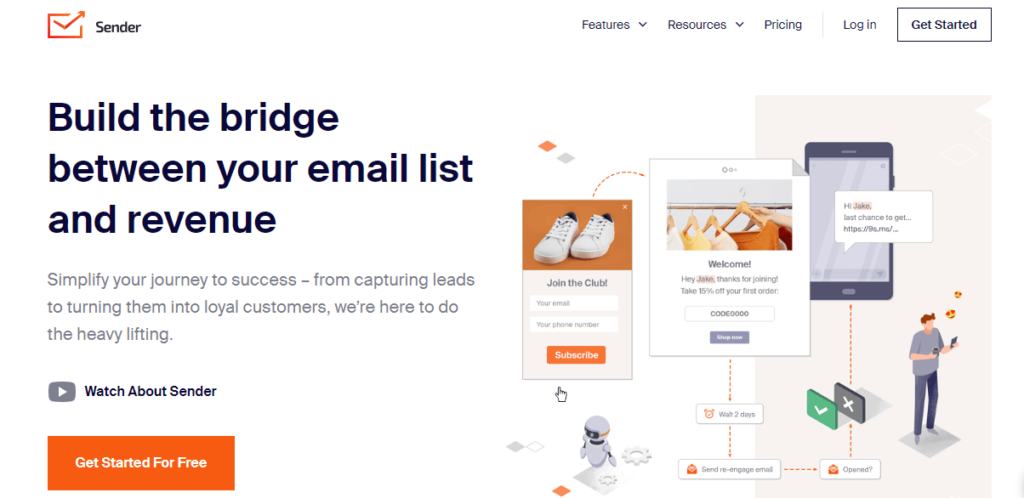
Sender’s robust analytics are beneficial for nonprofits, allowing organizations to monitor delivery rates, open rates, and individual subscriber activity. Additionally, the platform’s segmentation tools help nonprofits personalise communication, creating a more impactful supporter experience.
GetResponse is known for its versatility and is particularly useful for nonprofit organisations that want to grow their online presence. The free plan includes 500 contacts and unlimited emails per month, along with access to essential email marketing features like templates, basic segmentation, and autoresponders.
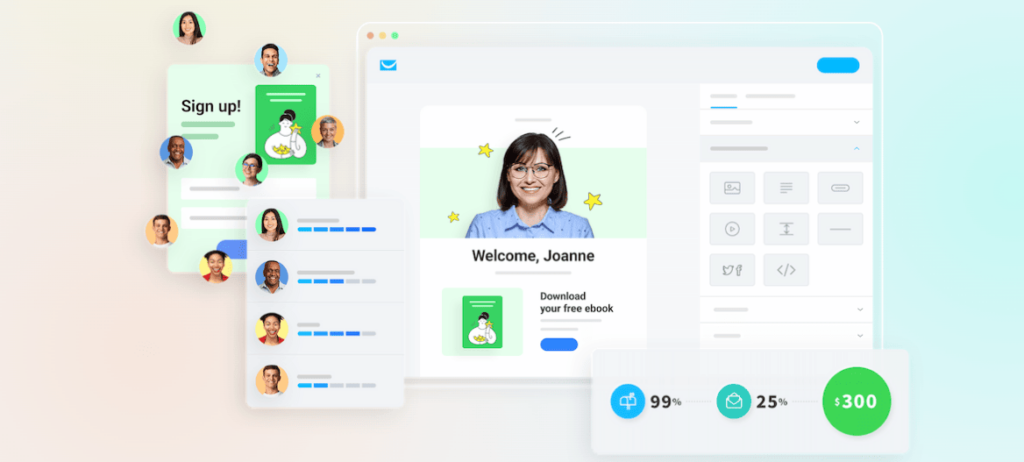
Nonprofits can also benefit from GetResponse’s landing pages, which make it easy to create signup forms for volunteer recruitment or donation drives. The platform’s easy integration with webinar tools and e-commerce platforms can also allow nonprofit organisations to engage supporters with online events and fundraising efforts.
HubSpot offers a powerful free plan that includes email marketing tools integrated with its free CRM, which is excellent for organisations that need both marketing and contact management capabilities.
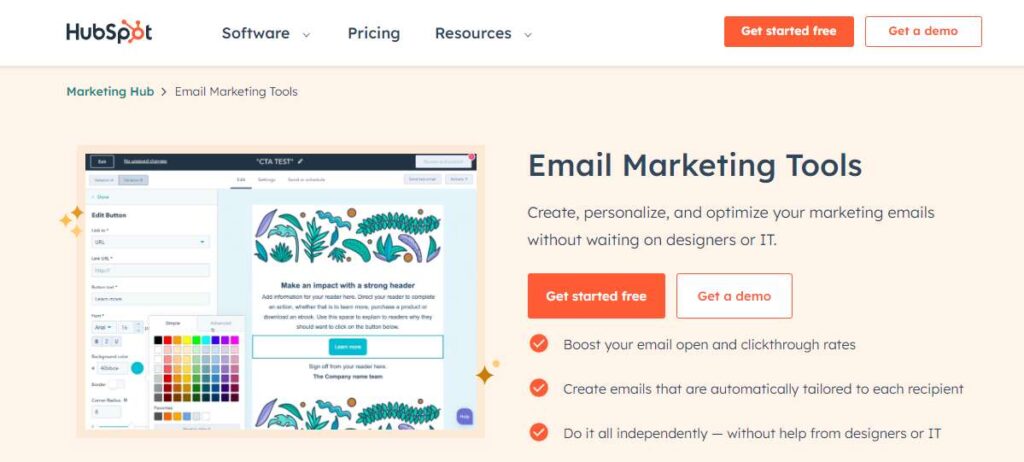
HubSpot allows nonprofits to run campaigns with no daily send limits and offers email templates, contact segmentation, and automation for workflows.
HubSpot’s analytics and contact management features will allow nonprofit organisations to create personalised campaigns that engage supporters based on their interaction history. Additionally, HubSpot offers integration with social platforms like Facebook, Instagram, and Google Ads, giving nonprofit organisations a way to create cohesive multi-channel campaigns without leaving the platform.
Kit’s formerly (ConvertKit) free plan supports up to 1,000 subscribers and provides nonprofit organisations with email broadcast capabilities, landing pages, and signup forms. Kit is popular among creators and nonprofits because of its simple, user-friendly design that allows even beginners to set up automated emails.
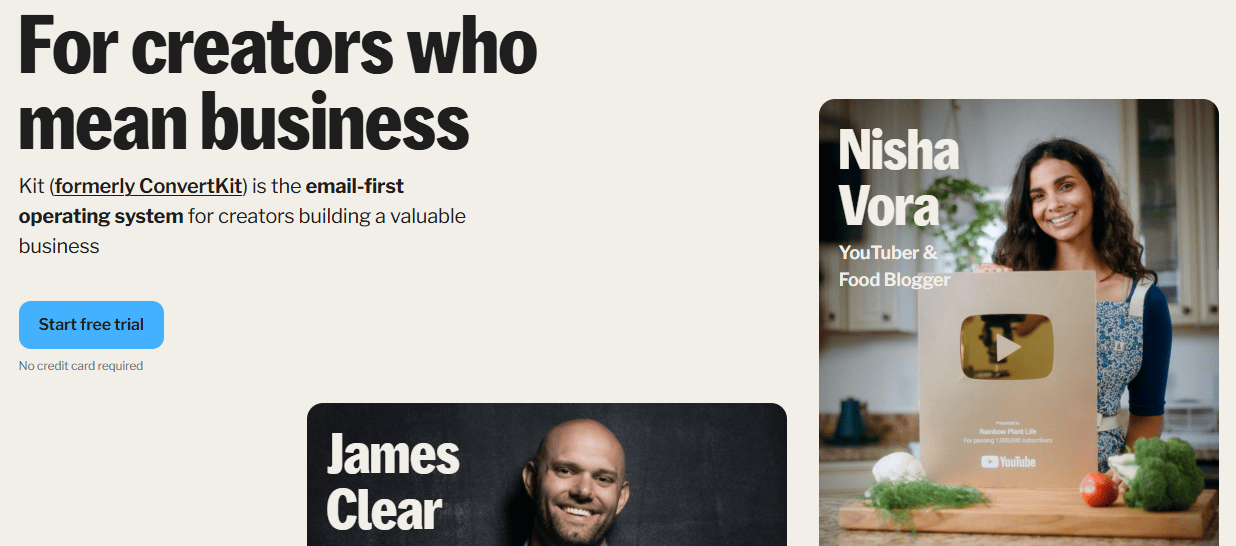
What’s unique about Kit is its focus on automation and personalised email funnels. Nonprofits can set up workflows to nurture donor relationships or engage new supporters with an automated welcome series. Kit also integrates well with WordPress, making it easy for nonprofit organisations with WordPress websites to collect email addresses directly on their websites.
MailerLite’s free plan supports up to 1,000 subscribers and 12,000 emails per month, giving any nonprofit organisation room to grow their lists. With landing pages, pop-up forms, and an easy drag-and-drop editor, MailerLite simplifies email creation, making it perfect for nonprofits without a dedicated design team.
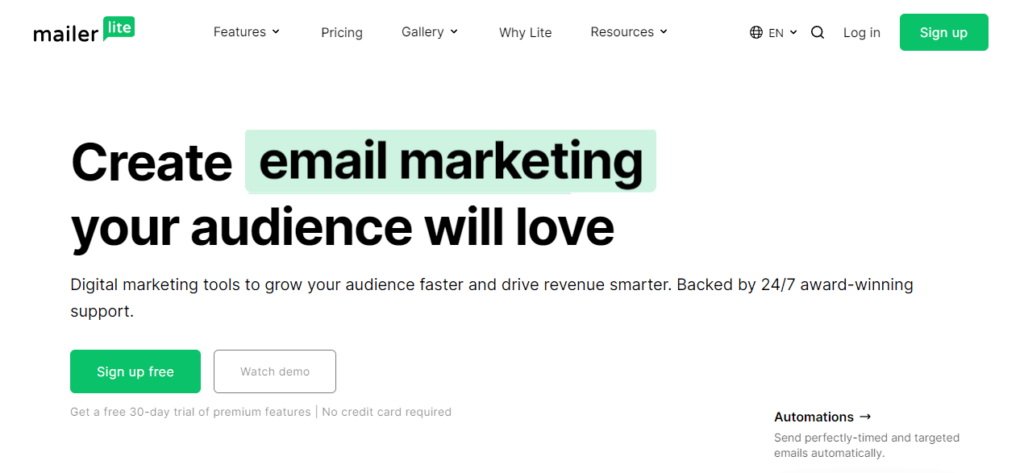
MailerLite also offers Google Analytics integration for detailed insights and A/B testing, allowing you to fine-tune your messages. The automation workflows help build relationships with donors and supporters over time, whether through a welcome series or periodic updates.
Take Your Non-Profit’s Email Marketing to the Next Level
With the right Email Marketing Strategies for Non-Profits, your organisation can connect more deeply with supporters, drive engagement, and boost donations, as email marketing is a journey that requires testing, refining, and adapting to your audience’s needs, start building your list, crafting personalised content, and tracking results to turn your emails into a powerful tool for advancing your mission
Ready to build an impactful email marketing strategy for your non-profit? Share your experiences or questions in the comment sections.


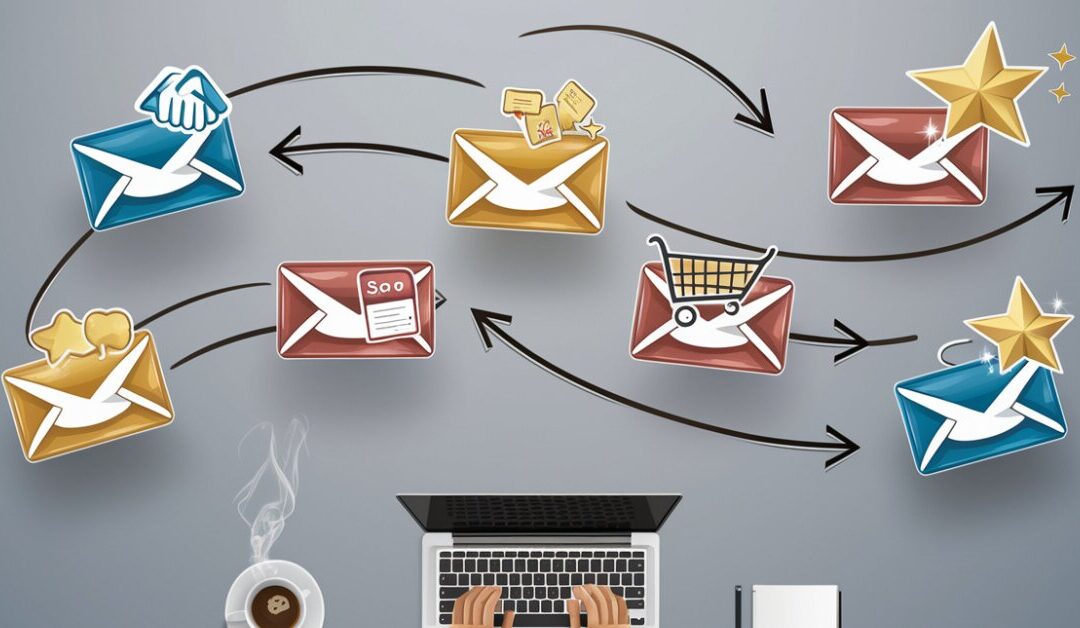

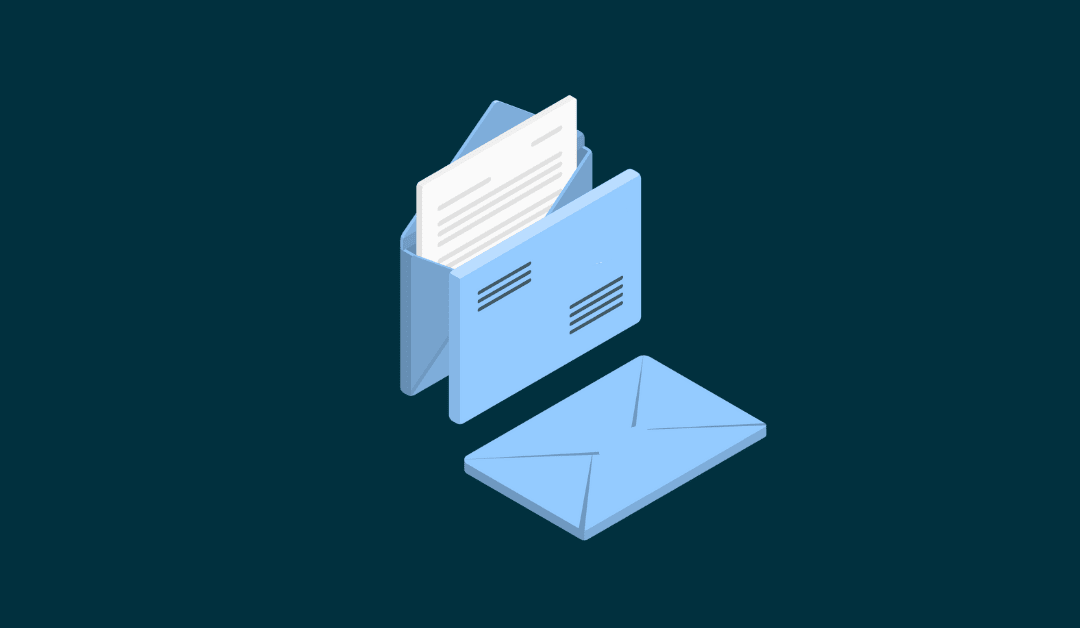
0 Comments